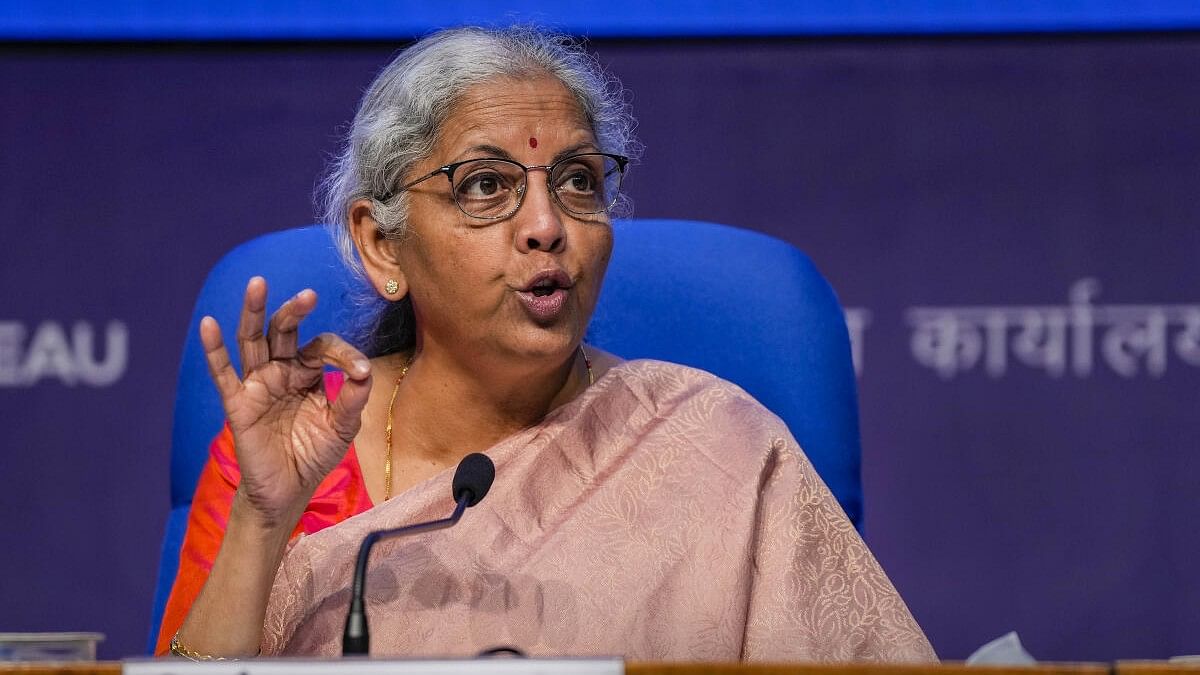
Union Finance Minister Nirmala Sitharaman addresses the post-Budget press conference, in New Delhi.
Credit: PTI Photo
Union Finance Minister Nirmala Sitharaman presented the Interim Budget 2024 aligning with strategic fiscal principles rather than succumbing to populist measures. The status quo was maintained on both direct and indirect tax rates, reflecting a prudent approach.
Sometimes not changing for the sake of it, and sticking to what’s working for the larger society is a good strategy. From this point, the interim budget is directionally positive, supporting the continuity of all critical commitments made by the government so far.
It projects a vision for the next five years, and outlines an ambitious capital expenditure of Rs 11.1 lakh-crore for the upcoming fiscal year, which is a 11 per cent increase from the current fiscal year. Remarkably, the government aims to reduce the fiscal deficit target to 5.1 per cent of GDP in the upcoming fiscal year, with a further target of 4.5 per cent in FY2026.
Sitharaman's interim budget speech underscores a commitment to fiscal consolidation, substantial infrastructure spending, boosting consumption, and increased capital expenditure. In FY2024-2025, the Union government plans to borrow ₹14.13 lakh-crore from the markets to fund its fiscal deficit, a decrease from the ₹15.43 lakh-crore gross market borrowing for FY2023-2024. This strategic move is anticipated to stimulate lending by banks in the coming year, leading to increased value of government bonds and additional profits for State-owned banks.
Given the interim nature of this budget, a comprehensive fiscal year budget will be presented after the Lok Sabha elections, following the formation of a new government. However, the budget did not elaborate on the progress of various projects and outlays from the previous fiscal year, nor did it offer insights into the reasons behind muted disinvestments. The disinvestment goal for FY2025 is set at ₹50,000 crore, while the target for FY2024 has been revised down to ₹30,000 crore, reflecting a less successful aspect for the government in this regard.
Acknowledging persistent geopolitical volatility and economic challenges, especially in food inflation and rural sector growth, a balanced approach is essential, considering the impact of fluctuating global oil prices and geopolitical dynamics.
For the first time, the budget explicitly addressed ‘deeptech’, ‘ESG’, ‘green economy’, and ‘blue economy’, albeit without detailed policy announcements. This could indicate a forthcoming emphasis on these themes in the Union Budget in July.
Notably, this budget speech leaned more towards political discourse, starting with a decade's achievements rather than focusing solely on the previous financial year. This set the stage for a progress report of the government, aligning with the upcoming elections.
The political messaging is clear, with policies centred on the uplift of four key segments of society: the garib (poor), mahilayen (women), yuva (youth), and annadata (farmers). This aligns with the broader objective of improving social and economic well-being and creating long-term opportunities for the citizens. The extent of the electoral mandate may drive substantial reforms in simplifying the taxation structure and possibly reforms in land and agriculture.
The interim budget speech primarily served as a report card for the past two terms of the Narendra Modi government, highlighting its efforts, impact, and successes. Well, it is election time ahead.
One might say, ‘why not?’. After all, a budget day is probably the most reported day in the media. The only thing that can outshine it, is if Prime Minister Narendra Modi actually addresses an open media conference!
The alignment between the economic report presented by the Chief Economic Adviser earlier this week, and the interim budget is clear — that the election manifesto seems geared towards the holistic development of GDP: Growth, Development, and People.
(Srinath Sridharan is a policy researcher and corporate adviser. X: @ssmumbai. )
Disclaimer: The views expressed above are the author's own. They do not necessarily reflect the views of DH.